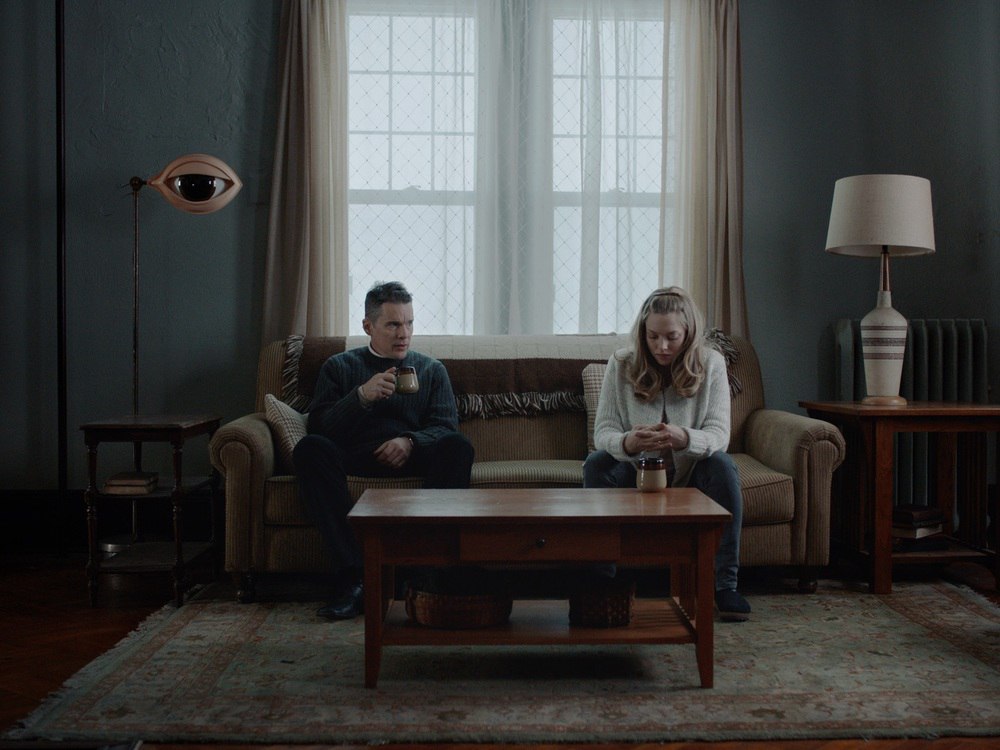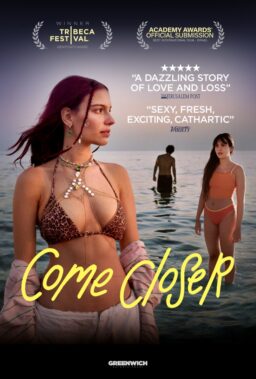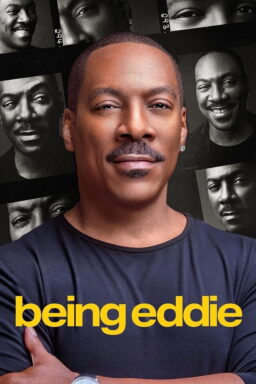When I last interviewed filmmaker Paul Schrader almost exactly ten years ago, he seemed deeply pessimistic about the state of filmmaking, at least as he knew it. In reference to a massive article he wrote for Film Comment about the idea of establishing an official canon of great films, he stated “In that article, I say that I at least will be able to finish my career making theatrical films, but I no longer believe that. I think things are changing so fast that I wont be able to finish and I am already beginning to explore different ways to make movies.” Although his position in the cinematic pantheon was already assured as the writer of the classic “Taxi Driver” and the director of such powerful and oftentimes stylish works as “Blue Collar” (1978), “American Gigolo” (1980), “Cat People” (1982), “Mishima: A Life in Four Chapters” (1985), “The Comfort of Strangers” (1990), “Light Sleeper” (1992), “Affliction” (1997) and “Auto Focus” (2002), the notion that his career would outlast theatrical filmmaking seemed too bizarre to believe. Happily, that has not proven to be the case—upon embracing both the new filmmaking technologies and the brand new forms of distribution that did not even exist a few short years ago, he seems to have been artistically reinvigorated. While films likes “The Canyons” (2013) and “Dog Eat Dog” (2016) may not rank among his finest works, they found him trying new things and attacking the material with a renewed sense of energy and urgency. With the stunning “First Reformed,” Schrader has taken that urgency, wedded it to the kind of story that only he could tell; the result is one of his very best films.
Ethan Hawke plays Ernst Toller, a former military chaplain who now serves as the pastor of a small Dutch Reformed church that once was a stop on the Underground Railroad but is now little more than a quaint tourist attraction in the shadow of its parent megachurch. One day, a pregnant parishioner (Amanda Seyfried) asks him to speak to her husband (Phillip Ettinger), a radical environmentalist with an increasingly tormented and despairing view of a world mankind seems hellbent on destroying. The talk does not go well and in its aftermath, Toller finds all of the things that have been tormenting him—guilt over the loss of his son in Iraq and the subsequent failure of his marriage, health issues, a drinking problem and his own concerns about a world increasingly fraught with corruption and environmental collapse—bubbling to the surface and when he is advised by his colleague to “Do something in the real world,” he is inspired to take those words to potentially horrifying extremes. In dealing with such concepts as guilt, sin, retribution and religious struggles and centering itself around a man whose internal anguish threatens to explode in unimaginable ways in an instant, the film is essentially a distillation of themes Schrader has been grappling with throughout his career. But rarely has he tackled them with the power and beauty that he demonstrates here.
Schrader recently came to Chicago to present “First Reformed” as part of the Chicago Critics Film Festival. The morning after the screening, I sat down to talk to him about the film, his use of transcendental style decades after writing about it in his landmark text Transcendental Style In Film: Ozu, Bresson, Dreyer (which has just been republished in a newly updated edition), the challenges of making films about faith and spirituality and what he considers to be his favorites from his own filmography. To flesh the interview out a bit, I have also included parts of the Q&A that I did with him after that festival screening.
(Note: Although a warning is given later on in this piece, please be advised that some of our discussion involves certain plot points of “First Reformed” and those who want to go into it completely fresh may want to set this piece aside until seeing it for themselves.)
“First Reformed” is an example of transcendental style, a cinematic approach that you literally wrote the book on years ago in which the filmmaker is more interested in invoking the spiritual sense of the characters than in moving them around in order to better convey the details of the plot. Many of your past films have included elements of transcendental style but “First Reformed” is the first that completely embraces that approach throughout. What led you to finally make a film fully utilizing that particular stylistic approach?
I wrote that book as a young man and I have now rewritten it and brought it up to date to include things like Tarkovsky and slow cinema. I was interested in that book because it was a bridge between my seminary training and my love of the movies. Once I got involved with movies, I put that behind me. People would try to connect that book with the films I was making and I would tell them that they were wrong because I wasn’t that guy. I was intoxicated with action and empathy and sex and violence and these are not things found in the transcendental tool kit I just was not going to make those movies.
About three years ago, I met Pawel Pawlikowski at the New York Society of Film Critics—he had done this film called “Ida”—and we got to talking. I liked the film a lot and we started to talk about spiritual cinema and contemplative cinema and how budgets were going down now and how films that would have once been financially irresponsible were now financially responsible. Afterwards, I walked uptown and thought “It is time to write that movie that you swore you would never write.” That is how it started.

In preparing the new edition of “Transcendental Style in Film,” did you find that your views on the subject had changed or evolved in significant ways and if so, did they also end up informing “First Reformed”?
It didn’t do much in regards to “First Reformed” but it helped give a more complex understanding of what I was up to forty years ago. When I wrote the book in 1972, I thought that the phenomenon of spiritual style was kind of an outlier. What I came to realize, in going back and reading Giles Deleuze and his books from 1982 and 1984 on time image and movement image, was that what I had considered to be transcendental style was simply an adjunct of what he called time image, which evolved out of World War II and whose first manifestation was neo-realism. This movement to where the time spent viewing an object became more important than the movement of the object. Different directors have used this insight in different ways from Antonioni to Mizoguchi. He and Andre Bazin point to the same scene as the beginning of the concept of time image, which is from “Umberto D.” by Vittorio De Sica. A maid gets up in the morning and goes to the kitchen to light the stove. She takes a match and strikes it against the wall but it doesn’t work. This is all in one shot. She takes another match and strikes it against the wall—it lights and she goes to light the stove but the match goes out. She gets another match and strikes again and now the stove lights.
Deleuze and Bazin said that the center of gravity in that scene shifted from her lighting the stove to the time it takes for her to light the stove. Bresson was one of the first people to realize the phenomenological effect of that. I am here and you walk out of the room and the door closes. Bresson just holds on the closed door for 1-2-3. What’s happening? Your eye doesn’t do that—if you walk out of the room, I don’t just sit here and stare at the door. I find something else to look at. Your eye doesn’t do that but the camera is making you do that. Something is happening and it is not about the door—it is about the time spent looking at the door. How the Bressonian sense of duration became so important and then how it moved into its extremes. Transcendental style was just a bubble but the forces behind it would continue and become extreme—it passes through what I call the Tarkovsky Ring and enters into museum space. It started out with that maid and the match and 20 years later it was “Jeanne Dielman” and 30 years after that, it becomes “Oxhide II,” which is a nine-shot, three-hour movie about people making dumplings.
When you are writing a wholly original screenplay along the lines of “First Reformed,” do you have the entire storyline planned out before you move on to the process of actually putting words on paper? Take the extraordinary ending of this film—did you know precisely how it would play out beforehand or did it develop as you wrote? (Needless to say, Spoiler Alert for the next two paragraphs.)
I don’t begin to write until I know everything. Screenwriting is a part of the oral tradition and if you can tell a story for 45 minutes that can hold a person’s interest, you have a screenplay. Then you just outline it and by the time you start to write it, you more or less know what is going to happen. With the ending of this film, I was contemplating which way to go because I saw that there were three different ways to go. One was the Peckinpah ending that would have been a combination of “The Wild Bunch” and “Zabriskie Point” in which body parts float around for four or five minutes in ultra-slow-motion—that would be cool and really freak people out but that would have also been very expensive. Then I thought I would do the “Country Prest” ending—in “Diary of a Country Priest,” the priest falls out of frame and dies and you are left looking at the crucifix on the wall.
Then I was talking about this with Kent Jones, a friend of mine who runs the New York Film Festival, and he said “Oh, you are going for the “Country Priest” ending. I thought you were going to go for the “Ordet” ending.” As soon as he said it, I thought “The ‘Ordet’ ending!” “Ordet” is a 1954 film by Carl Dreyer set in a religious community and there is an attractive younger couple and the guy has a brother who is crazy—a holy fool who thinks he is Jesus Christ. He goes off and gets lost in a rainstorm and the wife dies trying to find him in the rain. Now there is the funeral and she is laid out and the crazy brother walks in and says that he has come back to raise her from the dead. The man wants to throttle him but his daughter says “Why not let him try?” So he does and she does—he raises her from the dead. The man’s reaction to seeing his wife rise from the dead is not in any way spiritual—he doesn’t fall on his knees and say that it is a miracle. It is totally carnal—all he wants to do is get his hands on her again and hold her, touch her, caress her. I thought, “Yep, we should do the ‘Ordet’ ending” and we just burst into the world of carnal feelings. That was the choice that I made.
Can you talk a little about the visual style that you elected to use for the film, including the decision to shoot in the classic 1.33:1 Academy ratio?
When you decide to work on the quiet and contemplative side, you get involved with withholding techniques. Movies are normally almost desperately needy—they run right up to you, grab you by the lapels and shake you with beautiful girls and fast cars and by playing music all the time so that you know exactly how to feel at any given moment. Films like this do not do that—they go the other way. When you get kind of interested in them, they start leaning back by withholding stuff. They withhold an editing pace that you expect, courage that you expect, music that you expect. They withhold foregrounding and depth-of-field elements. There are about 8-10 techniques that are withheld by austere filmmakers, though they all do not use the same techniques in the same ratio. They all use them in one way or another. In this film, for example, there are no over-the-shoulder shots.
The last few years have seen an uptick in movies that are ostensibly about spirituality and faith, but don’t give either of them even a fraction of the serious consideration that “First Reformed” does.
These so-called faith-based films are a much different thing from what I am talking about. They use all the traditional tools and they just assert Jesus or a minister into the formula—it is really no different. They aren’t about the church—they are about manipulation. If you want to make a film that says “Hitler Is God” or one that says “Hitler is the Devil,” it is the same film that uses all the same tricks. Just using these tricks to say God is King is not really different than doing the opposite. In order to get to that place where the holy resides, you have to get involved with withholding techniques. Taking things away from the viewer is the same as meditation. Good things happen to people who wait and making people wait until it happens to them is the delicate dance of a spiritual style. You have to use boredom like a scalpel to contour an emotional reaction without it becoming plain old boredom.
The only recent major film that even comes close to comparing with “First Reformed” along those lines is Martin Scorsese’s “Silence.”
Yes, but that one is really half-and-half. I remember saying to my cinematographer that that was a good example of how to do something half-right. The half of him that knew that he had to be quiet and silent and wait was always fighting the half that wanted to run around because he is, by nature, more of a street entertainer. He is not an ascetic by nature and so he keeps struggling with this. For long patches, he does everything right—no music, static images—and then, all of a sudden, there will be an action scene. Also the acting—you can’t have people doing what Adam Driver was doing in that film and expect to get to anything resembling a spiritual space. That is the difference between a lean-away film and a lean-into film. “Silence” is quite schizophrenic in that it leans away and then it all of a sudden starts leaning in—I just don’t think you can have it both ways.

When we were talking earlier, you were discussing the new distribution models currently available and you seemed to be remarkably at ease with how things have changed in this regard. Does that apply to everything you do equally? For example, I know that I saw recent films of yours like “The Canyons” and “Dog Eat Dog” via screener links and while I would have obviously preferred to see them in a theater, I don’t think that too much was lost in the translation. “First Reformed,” on the other hand, has such a gravity to it, both visually and dramatically, that I cannot imagine it having nearly the same impact to viewers at home as it would if they saw it in a theatrical setting.
I am perfectly fine with that but here is how that has to work. The conversation has to begin in a theater, which entails this long rollout with festivals and so forth. Once the conversation is established, then people will know how to watch it at home. They will say “Oh, let us see that film that everyone is talking about—the Ethan Hawke one where he is the quiet one.” Then, if you are willing to set aside time at home in the way that you set aside time at a theater, you can watch the film properly. If the conversation has been established by people who have seen it in the theater, then people who didn’t see it in the theater can pick it up. A24 has been very good in waiting this out. There are only a handful of independent films each year that get their head above the crowd—maybe 8-10 at most—and to do that, they have to go through the gauntlet.
Speaking both as a former film critic and as a director whose films, more so than others, tend to live or die to a great extent based on their critical reception, what are your thoughts regarding the state of film criticism these days?
There is a lot of film criticism out there—everybody is a film critic but nobody is making a living at it. I am surprised by the depth and the quality of a number of the people out there writing but this used to be a profession where someone could make a living.
Among the current crop of films and filmmakers, which are the ones that stand out for you?
Because there are so many films being made and because almost anyone can get into the filmmaking club now, you are seeing all kinds of interesting films right and left. There are more quality films out there than can be processed by the audience that wants to see quality films. What surprises me most is the number of high-quality first films. If you haven’t figured out how to make a film by the age of 12, you are now behind the curve. They can do all the digital effects and do the music on the phone. They can distribute it on the phone.
As was mentioned last night, the work that you will always be most associated with will be your screenplay for “Taxi Driver.” However, among your films, are there any that stand out as personal favorites of yours for whatever reason?
Criterion has just reissued a Blu-ray of “Mishima,” which is still a unique film—there is nothing quite like it. I think “Affliction” is an almost perfect adaptation of that book. For me, the direction that I like best is in “The Comfort of Strangers.” I think that is my best-directed film and my most personal one is “Light Sleeper.”












